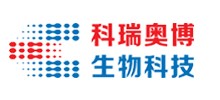产品中心
当前位置:首页>产品中心Anti-C7orf10/PE-Cy7
货号: bs-15257R-PE-Cy7 基本售价: 2980.0 元 规格: 100ul
产品信息
- 产品编号
- bs-15257R-PE-Cy7
- 英文名称
- Anti-C7orf10/PE-Cy7
- 中文名称
- PE-Cy7标记的7号染色体开放阅读框10抗体
- 别 名
- Chromosome 7 open reading frame 10; Dermal papilla derived protein 13; DERP13; FLJ11808; Hypothetical protein LOC79783; ORF19; Russel-Silver syndrome candidate; Uncharacterized protein C7orf10;CG010_HUMAN.
- 规格价格
- 100ul/2980元购买 大包装/询价
- 说 明 书
- 100ul
- 研究领域
- 细胞生物 免疫学
- 抗体来源
- Rabbit
- 克隆类型
- Polyclonal
- 交叉反应
- Human, Mouse, Rat, Dog, Cow, Horse, Rabbit, Sheep,
- 产品应用
- ICC=1:50-200 IF=1:50-200
not yet tested in other applications.
optimal dilutions/concentrations should be determined by the end user.
- 分 子 量
- 48kDa
- 性 状
- Lyophilized or Liquid
- 浓 度
- 1mg/ml
- 免 疫 原
- KLH conjugated synthetic peptide derived from human C7orf10
- 亚 型
- IgG
- 纯化方法
- affinity purified by Protein A
- 储 存 液
- 0.01M TBS(pH7.4) with 1% BSA, 0.03% Proclin300 and 50% Glycerol.
- 保存条件
- Store at -20 °C for one year. Avoid repeated freeze/thaw cycles. The lyophilized antibody is stable at room temperature for at least one month and for greater than a year when kept at -20°C. When reconstituted in sterile pH 7.4 0.01M PBS or diluent of antibody the antibody is stable for at least two weeks at 2-4 °C.
- 产品介绍
- background:
Chromosome 7 has been linked to Osteogenesis imperfecta, Pendred syndrome, Lissencephaly, Citrullinemia and Shwachman-Diamond syndrome. The deletion of a portion of the q arm of chromosome 7 is associated with Williams-Beuren syndrome, a condition characterized by mild mental retardation, an unusual comfort and friendliness with strangers and an elfin appearance. Deletions of portions of the q arm of chromosome 7 are also seen in a number of myeloid disorders including cases of acute myelogenous leukemia and myelodysplasia. The C7orf10 gene product has been provisionally designated C7orf10 pending further characterization.
Tissue Specificity:
Highly expressed in kidney. Intermediate expression in liver, skeletal muscle and pancreas. Little to no expression detected in other tissues examined.
DISEASE:
Defects in C7orf10 are the cause of glutaric aciduria type 3 (GA3) [MIM:231690]. GA3 is a metabolic disorder due to peroxisomal glutaryl-CoA oxidase deficiency and characterized by the excretion of abnormal quantities of glutaric acid but low 3-hydroxyglutaric acid.
Similarity:
Belongs to the CaiB/BaiF CoA-transferase family.
Database links:
UniProtKB/Swiss-Prot: Q9HAC7.2
Important Note:
This product as supplied is intended for research use only, not for use in human, therapeutic or diagnostic applications.

